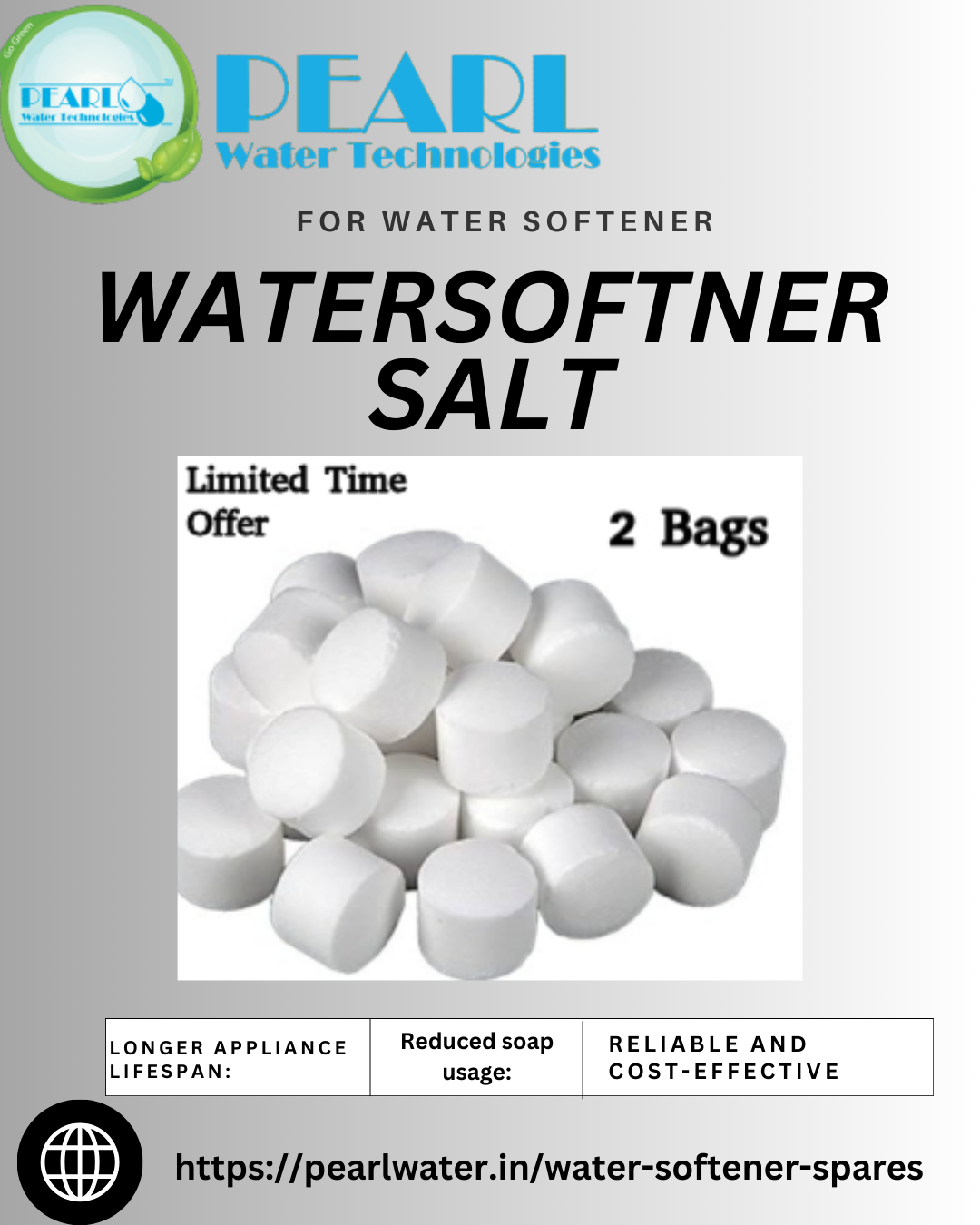
Water Softener Salt | Pearl Water Technologies
Water Softener Salt is a crucial component in the operation of water softeners. It is used to regenerate the resin beads inside the water softener, which are responsible for removing calcium and magnesium ions (the minerals that make water “hard”). The salt helps to restore the softening capacity of the resin beads by flushing out the accumulated hardness minerals during the regeneration process.
Types of Water Softener Salt:
Rock Salt:
Description: This is the most basic form of salt used in water softeners. It is mined from salt deposits and typically contains impurities such as minerals and dirt, which may require more frequent cleaning of the brine tank.
Pros: Inexpensive and readily available.
Cons: Contains impurities that can clog the system over time, requiring more maintenance.
Solar Salt:
Description: Solar salt is produced by evaporating seawater using solar energy. It is usually purer than rock salt, with fewer impurities, and is more commonly used in residential water softeners.
Pros: Higher purity, less frequent maintenance required.
Cons: Slightly more expensive than rock salt, though still affordable.
Evaporated Salt:
Description: This is the purest form of water softener salt, produced by evaporating water from salt brine. The result is nearly 100% pure salt with minimal to no impurities.
Pros: High purity, which is great for long-term system efficiency and minimal maintenance.
Cons: More expensive compared to other types of salt.
Pellet Salt:
Description: Pellet salt is a form of evaporated salt, compressed into small, uniform pellets. These pellets dissolve more easily and quickly during the regeneration process.
Pros: Easy to handle, efficient dissolution, and cleaner than rock salt.
Cons: Higher cost than rock or solar salt.
Crystal Salt:
Description: Crystal salt is another form of evaporated salt but in a larger, non-pelleted form. It is often used in areas with a high water hardness level.
Pros: Large crystals dissolve slowly, reducing the frequency of salt replenishment.
Cons: Can leave residue if not properly dissolved.
How Water Softener Salt Works:
Water softeners operate on the principle of ion exchange. Hard water, which contains high levels of calcium and magnesium ions, passes through resin beads inside the water softener tank. These beads are initially coated with sodium ions from the salt. When the hard water passes through, the resin beads swap sodium ions for the calcium and magnesium ions. This process softens the water, as the sodium ions do not cause scaling.
Over time, the resin beads become saturated with calcium and magnesium, reducing their effectiveness. That’s when the regeneration process kicks in. During regeneration, a salt brine (water mixed with salt) is flushed through the resin bed. The high concentration of sodium ions in the brine displaces the accumulated calcium and magnesium ions, and the resin beads are “recharged.” This process allows the softener to continue removing hardness from the water.
Benefits of Using Water Softener Salt:
Prevents Scale Buildup: Soft water prevents scale from accumulating in pipes, water heaters, and appliances, extending their lifespan.
Improved Efficiency: Softened water helps soap and detergent work more effectively, reducing the amount needed for cleaning.
Better Water Quality: Softened water is gentler on the skin and hair and can improve the taste and smell of drinking water by removing minerals that affect flavor.
Lower Maintenance Costs: By preventing scale buildup, water softener salt helps reduce the frequency of repairs and maintenance costs for appliances and plumbing systems.
How to Use Water Softener Salt:
Refilling the Salt: It’s important to keep an eye on the salt level in the brine tank. You’ll typically need to refill the salt every 1-2 months, depending on water hardness, the size of your system, and your household’s water usage.
Salt Usage: In general, the harder the water and the more water your household uses, the more salt you’ll need.
Maintaining the Brine Tank: Over time, some salt may form crust or mushy clumps in the brine tank. Regularly check and clean the brine tank as needed to ensure the system works efficiently.
Conclusion:
Water softener salt is essential for ensuring that your water softening system operates effectively and provides soft water for your home. Choosing the right type of salt for your system, along with regular maintenance and replenishment, will help keep your home’s water clean and scale-free, preserving the efficiency of your appliances and plumbing.
Visit:https://pearlwater.in/water-softener-spares/water-softener-salt-tablets-25-kg
Relevant links:
https://zekond.com/post/362411_water-softener-salt-is-essential-for-regenerating-ion-exchange-resins-in-water-s.html
https://pinlap.com/posts/366025
